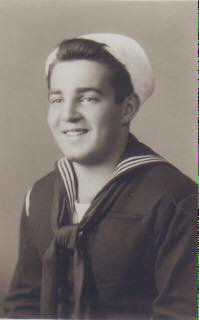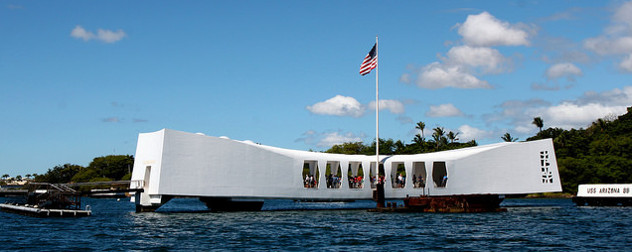Sociologists and political scientists have their ways of defining what group of people makes up a nation, and I have mine: In a nation, certain dates are inscribed in the collective consciousness.
Virtually every American past kindergarten knows that July 4 is not just another summer day. The shorthand 9/11 has a somber meaning, even for teenagers who are too young to personally recall what happened on that date in 2001. In other countries, that date would not even be written as 9/11; 11/9 is more common abroad.
We remember these days because they changed history and affect our lives even today, though the events for which stand out may have happened generations ago. Americans will mark July 4 as long as there are any Americans left. We’ll have to see about 9/11; it is too recent to know. In 1968, Americans paraded on Nov. 11 to celebrate the soldiers who served in “The Great War” to end all wars, which we celebrate as Veterans Day (other nations call it Armistice Day). That year marked the 50th anniversary of the end of fighting in World War I. Will there be similar observances when the 100th anniversary rolls around, two years hence? Not to the same extent, I think, although I hope we will pause to reflect.
History has trouble living past the lives of those who lived it, or at least those who knew those who did. The Civil War ended on April 9, 1865. Exactly 100 years to the day from Gen. Robert E. Lee’s surrender to Gen. Ulysses S. Grant, TIME magazine published an issue that put Charlie Brown and the rest of the Peanuts gang on the cover.
Today is December 7. If you are an American old enough to read this, you know this is the anniversary of Japan’s attack on Pearl Harbor. It is, in fact, the 75th anniversary of the date that President Franklin D. Roosevelt declared “will live in infamy.”
It is safe to say that on that day, Japan won the battle but lost the war. The United States did not intervene when Japan invaded China in 1937. Torn between anti-Nazi “hawks” and largely anti-communist “isolationists,” we sent only material aid to the United Kingdom when it held out against German conquests of Western Europe, including the 1940 occupation of Paris. But the carnage of Dec. 7, 1941, which left more than 2,400 Americans dead and much of the Pacific Fleet in tatters, instantly changed all that. The country immediately went to a complete war footing. Production of civilian goods was slashed, rationing and price controls were imposed, and the world’s largest industrialized power focused all its manpower and machinery on overwhelming the enemy.
Japan’s leaders had understood the risk. Pearl Harbor’s mastermind, Admiral Isoruku Yamamoto, had hoped to catch and destroy American aircraft carriers in port, which would have crippled our ability to respond to Japanese advances in the Philippines and Southeast Asia. But all three of the Pacific Fleet’s carriers – the Lexington, the Enterprise and the Saratoga – were outside the harbor when the Japanese attacked. Lexington and Enterprise were on missions with their accompanying task forces, while the Saratoga was in San Diego after undergoing dry dock maintenance in Bremerton, Washington, according to naval historian Jack McKillop. The Enterprise was close enough to Hawaii to have 18 of its aircraft join Pearl Harbor’s defense; six of those planes were shot down.
In all, eight American battleships, 328 aircraft and 11 other naval vessels were damaged or destroyed in the assault. Most, however, were eventually raised and salvaged; only the battleships Arizona and Oklahoma and the auxiliary USS Utah did not return to action. The USS Arizona remains where it sank, along with the 1,177 crew who were aboard that Sunday morning; the site is now a much-visited memorial.

Seaman 2nd Class Harold Elkin.
Photo courtesy Larry Elkin.
My mother, who will turn 90 next week, remembers getting the news of Pearl Harbor. My father enlisted in the Navy in May 1943, as soon as he reached the minimum age of 17. Seaman 2nd Class Harold Elkin underwent basic training in Newport, Rhode Island, went to the United Kingdom to support the invasion of Normandy in 1944, and then was transferred to the Pacific Fleet, where he was serving aboard an auxiliary craft in the Philippines when Japan surrendered in 1945.
In between those two missions, while home on leave in New York City, my father met my mother at a Halloween party in 1944. So there is more than one reason why it is safe to say that if Japan had not attacked Pearl Harbor, you would not be reading this post right now. I probably would not be here to write it.
Like many vets, my father did not talk too much about the war when I was growing up in the 1960s. But he became more openly proud of his service as time went on, especially after my brother sent our parents on a 50th anniversary trip to Hawaii 20 years ago. In his later years, my father liked to wear a cap commemorating his service, and he enjoyed talking about it when strangers thanked him.
Seaman 2nd Class Harold Elkin would have wanted to mark the 75th anniversary of Pearl Harbor and to honor the struggles and sacrifices that followed. He can’t; Monday will be the sixth anniversary of his death.
But I am his son, and I am an American, and I remember.









December 8, 2016 - 11:07 am
Nice piece, Larry. And a great photo.